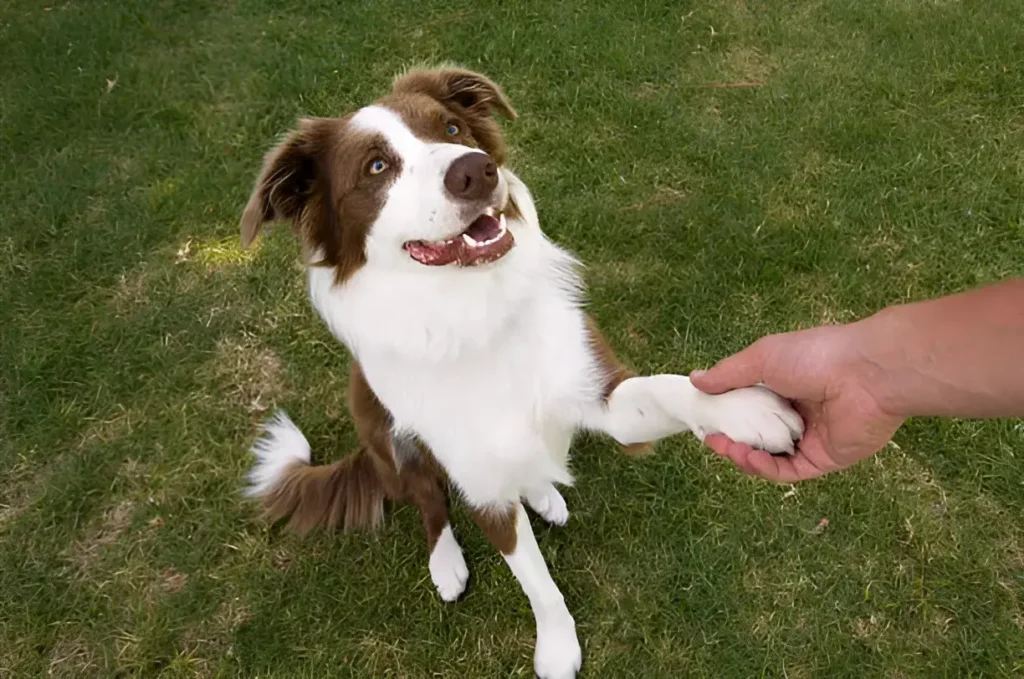Like humans, many dogs exhibit a preference for using one paw over the other. However, there’s a surprising twist: unlike the strong right-handed bias in people, dogs show a more even distribution between right-pawed, left-pawed, and ambidextrous companions. Let’s delve into the science and what this unique quirk reveals about your furry friend.
Brain Power: Understanding Paw Preference
The secret behind a dog’s favored paw lies in brain lateralization. Their brain, much like ours, has two hemispheres, each specializing in different functions. The hemisphere controlling the dominant paw may also influence aspects of their personality and how they react to situations. Research like a 2020 study in the Journal of Animal Behavior suggests interesting links between paw preference and a dog’s overall behavior.
Uncovering Your Dog’s ‘Handedness’
Want to know if your pup’s a righty or a lefty? These simple tests offer clues:
- The Kong Challenge: Fill a Kong with peanut butter or treats and see which paw they consistently use to hold it steady.
- Stepping Out: Watch which paw leads the way when starting to walk, or going up and down stairs.
- Treat Temptation: Place a treat under furniture just out of reach, then observe which paw they instinctively try to use.
Repeat these tests over a few days for a more reliable picture.
What Paw Preference Means for Your Dog

Knowing your dog’s paw preference offers more than just a fun fact. Consider these ways it might come in handy:
- Targeted Training: Start teaching commands like “shake” or “high-five” with their dominant paw for easier learning.
- Potential Agility Advantage: If your dog participates in sports or agility, trainers may use paw preference to refine techniques for faster learning.
- Understanding Their Worldview: Dogs might favor exploring new situations or objects from the side aligned with their dominant paw.
- Emotional Stability: Research suggests dogs with stronger paw preferences could be slightly less reactive and anxious in new situations.
Ambidextrous Canines: The Exception to the Rule
Just like some humans, certain dogs show no clear preference for one paw over the other. This indicates different brain wiring but doesn’t reflect a lack of skill!
The Science Continues: What We’re Still Learning
While more research is needed, fascinating connections are emerging:
- Age & Sex Links: Studies hint that female dogs and older dogs might have a slightly greater tendency towards right-paw dominance.
- Personality Clues: Dogs with stronger paw preferences (in either direction) seem to exhibit bolder and less fearful personalities than their ambidextrous counterparts.
Conclusion
Whether your dog strongly favors one paw or tackles the world with both, their paw preference is an endearing and insightful element of their individuality. By observing and understanding this quirk, you can better tailor training, play, and support their overall well-being.
The photo featured below the post headline is Credit: Jim Craigmyle/Gettyimages
I hope you find this post helpful and informative. If Yes’ feel free to share it with your friends!
Frequently Asked Question
Is paw preference genetic?
Genetics likely play a role, but environmental factors contribute as well. More research is needed to fully understand inheritance patterns.
Can you change a dog’s paw preference?
While it’s possible to encourage the use of their less-dominant paw, there’s no need to force a change.
Does paw preference affect a dog’s health?
No, there’s no evidence to suggest any direct impact on health.
Are left-pawed dogs more aggressive?
There is no scientific evidence to support a connection between paw dominance and dog aggression. A dog’s temperament depends on many factors, including breed, training, socialization, and individual experiences.
Are left-pawed dogs more intelligent?
Intelligence in dogs isn’t linked to paw preference. All dogs, regardless of handedness, have the potential for learning and problem-solving.
What are the characteristics of left-pawed dogs?
Left-pawed dogs don’t exhibit a set of unique characteristics. They possess the same wonderful canine traits as right-pawed or ambidextrous pups!
Do dogs have a dominant paw for specific tasks?
Some research suggests dogs might use different paws for different things – like holding a toy steady vs. initiating movement. This is an area of ongoing study.
Why does my dog seem to favor different paws at different times?
Inconsistent paw use might indicate your dog is ambidextrous, or it could be related to the task itself. If you notice sudden changes or awkwardness, consult your veterinarian to rule out any injuries.
Can paw preference help me choose the right dog breed?
While paw preference shouldn’t be a primary factor in breed selection, it’s an interesting observation. Some studies suggest working breeds might exhibit stronger paw preferences, which could be considered if you plan for extensive training or dog sports.
Do other animals have paw preferences?
Yes! Paw preference is seen in various animals, including cats, horses, and even parrots. This suggests brain lateralization is widespread in the animal kingdom.

